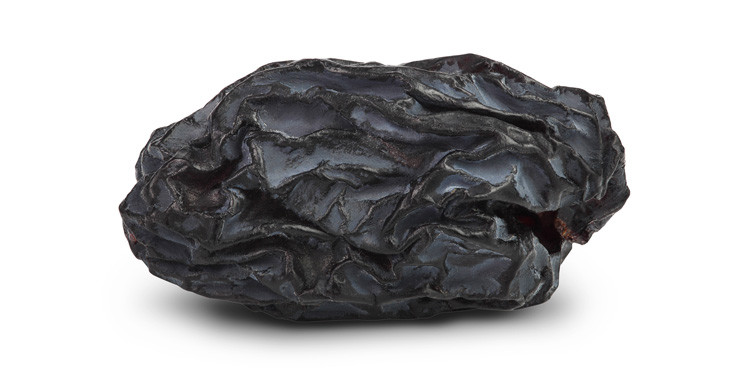The Humble Raisin is a portal to Mindfulness and beyond!
How can a humble raisin possibly be a portal not only to the world of Mindfulness, but to the subtle thinking and emotional realm that goes on just beneath consciousness and then further down into the root of compassionate energy and a sense of connection with everyone and everything?
Even though the egoic part of me tells me I have ‘been there’ and ‘done that’ with the raisin exercise – I have learned with Mindfulness there is never enough ‘being’ and ‘doing’ of the simple foundational practices. If the raisin exercise was the only exercise I ever did – this would be enough for me, as I learned this week.
This simple yet profound exercise is worth revisiting. Regularly. Like going to the gym.
I can tell myself I am eating mindfully “Mmmm this cake is gooooooood”, but my mind has eaten it already and is looking for the next slice before I’ve finished munching and I have missed out on most of what the cake had to offer me. I seem to be on a mission to just get the cake inside me! The intense focus of Mindfulness with the raisin seems to train the part of my mind that ‘wants’ – it has the power to intercept this (really strong) urge to feed my face and I am taken into slow motion… taking in every exquisite moment… of the ritual… of nourishing my body with this miraculous tiny object. With this raisin I become aware of ‘what’s happening while it’s happening’ whilst noticing any notions of preference that may arise. (Mindful eating is such a great place to explore this noticing preference.) Rob Nairn’s quote uses ‘without preference’ but let’s just see if we can just notice preference in the beginning! Is your raisin too small? Too big? Not a very ‘good’ raisin? Has someone else got a better one?
The mindful raisin exercise is much more than an exercise in simply Mindful eating, which perhaps we might think in the beginning. However it does imbue dinner time with a new-found sense of presence – but not always. It needs practice. If I make a special effort, I can be entirely present with my meal, but this is can be tricky under normal circumstances at the dinner table with all the chat that goes on around the table in my house. That’s why retreats are so good for me to hone and embed the skills, where I can really observe and savour the moment-to-moment experience of eating, which allows some space through which my subtle urges and desires can make themselves known to me.
With the raisin exercise each time my experience has been different. This week it was the experience of leading this practice that opened further doors and took me through a portal. I am grateful to my teacher training peer group for the experience of working together. We came together through our teacher training this year, and we continue to practice, learn and discover and it is like a never ending unfurling of lotus petals as we go deeper into the practices each time we do them. Inquiring into each others’ experience with gentle curiosity is ‘like watching a beautiful sunset’ (Fay Adams on the incredible Inquiry course), which fills me up with an unspeakable joy.
We all had a break after our July course and last week came together for the first time in a while and as I really am aiming to start an 8-week online course soon– I decided I would start at the beginning and deliver the raisin exercise to get me in the mood 🙂
In the West we have been taught and believe we have 5 senses, while in the East there are 6. How can this be? When people in the West talk about a 6th sense, there is a subtle belief that this is the ‘woo-woo’ sense. The Eastern 6 senses relate to our sensory receptors that begin with the mind as a first sensor and is not related to the ‘woo-woo’ 6th sense we talk about in the West.
Tibetan Buddhism’s understanding of the senses begin with Mind/Brain itself which is seen as a sensory organ which picks up thought as its percept (as the ears pick up sound.) This makes sense to me, but it was only after my delivery of the raisin exercise that I explored this concept further; and I feel it has a lot to offer us. It explains a lot about how we in the West believe our thoughts to be facts which we identify with, rather than ‘mind objects’ which pass though us.
Exploring the surface detail of the raisin in detail, combined with a mindful curiosity, allowed me to notice certain knowledge and facts as I perused the tiny wrinkled object. I became curious also about what I don’t know about the raisin, which appeared to me to be a much larger entity! Thoughts come to mind immediately about this raisin – I know it’s a raisin but the essence of this raisin, that was once a grape – there’s a lot I don’t know about this particular raisin. I had a vision of the raisin which took me to its place of origin. Where did it come from? On which sunny slope did it fatten and grow? In which country? Which birds around it didn’t eat it? Which creatures lived nearby? Who tended to it? Who picked it or was it a machine? I was taken into the raisin’s world as it spent its last moments in mine. I had a felt sense that many people, causes and conditions had worked together to bring me this raisin. Zoom back into the world and I have a raisin here alone in my kitchen and it is easy to think that nobody has anything to do with me and this raisin in my kitchen.
These could be considered thoughts. And in one sense they are – but the experience was one of insightful contemplation which expanded my world and broke through some kind of mental limitation I had around my knowledge and how thinking I know something can be a barrier to actually knowing something! Or feeling something.
When I look at the raisin, a new way of seeing opened up for me. My eyes are relaying information to my brain, which is responding with all prior experiences of raisins. I cut through this by really allowing the eyes to explore the surface and textures of the raisin. The texture I notice, just by looking I know how it will feel. The light and shadow suggest it is crumpled, waxy I can guess at the texture. Such a variety of colour. It begins to look like a shrivelled brain. A black walnut. A dead fly (school dinners – there was a cake we used to call a flies graveyard) memories of swimming in Cornwall at a pool with a bag of black raisins instead of sweets. Childhood picnics, memories come flooding back about raisins in general and I can see that just looking is enough to trigger many conditioned responses and emotions. You will have different memories. We can all look at this raisin and it will take is all to different places.
I am interested in how I look at and understand the raisin. I am currently studying on the Studies in Mindfulness Masters course with the University of Aberdeen. My professional context as a graphic designer is visual communication & imagery (what we see) with Mindfulness which takes me into the realm of image as a contemplative practice. I’m interested in how we look, and what comes to mind when we do. My research tells me that most of what we think we see is the mind’s projection. Just starting with the raisin is a great place to start with contemplation of seeing. We bring beginner’s mind to the raisin. What if this was the first time I have ever seen this item?
As we move through the senses, each sense can be a portal to a new spacious mindful awareness. After looking, touching, listening (yes! It is possible to listen to a raisin – “notice the urge to laugh”…we can hear that the raisin might be juicy!), we notice the urge now to ‘just eat it’ – just get on with it! And taste and sensations around the eating…
We might also detect a growing impatience? (We normally eat so fast!) Can you just place it in your mouth – notice the urges – the skill of the tongue, the urge to bite? To swallow? The immediate urge for more? More what? What do you want? More taste? More biting? More what exactly? What do you feel?
Try this Mindful Eating (15 mins) from our 31 Day Mindfulness Challenge with Karen Lerpinier. (which we are doing again in January!)
In the raisin session we all had different food objects. During the inquiry a participant in my group feels emotional. Simply looking at their food object took them back to childhood and they feel a real sadness; of a time lost…time with grandparents growing grapes… of degradation of the environment. Another acknowledges having never really looked at the chocolate they eat regularly, admitting to a mindlessness around consumption which we all nod and relate to. The bag of chocolate buttons almost gone.
At the end of the session we are all contemplating the vastness of this tiny raisin and what it can bring us when we choose to bring mindfulness awareness to this everyday activity. We consider how what we see can trigger reactions in us, how memories arise and transport the mind away from the present moment. Coming back to simple presence with our sensations open up this moment and we can live it much more fully, in our daily lives….we can begin to see how we project our stories onto the things around us. Mindfulness shows us the potential of each moment to crack open our world-we-think-we-know and take us into a much vaster space of curiosity and wonderment of not-knowing.
As we closed the practice, I was moved by the strength of our session. I was moved to find that delivering the raisin exercise and hearing how it moved people and gave such a variety of insights that my fears around delivering Mindfulness are fleeting. My motivation to share Mindfulness with others is driven by something profound, which is powered by compassion to share this gift with others. Practicing with others adds strength and depth to my experience and I am grateful to my group.
“Imagine if we gave the people around us this much attention” was a profound parting thought from one member.
Lisa Hellier.
Weekly Challenge
A simple (!?) challenge this week – Imagine if we had nothing to give but our attention this week, how wonderful that would be?
Choose where you would like to apply your full and undivided attention this week. Perhaps set an intention for a set amount of time, or during a phone conversation, or simply with breakfast.
Try it with those you come into contact with this week. How does that make you feel?
My grandchildren came this weekend and I remembered the parting words above as I gazed into their eyes as they told me their stories and we played and made things together. I had set the intention to (as much as possible! I am human!) when engaging with them to give them my full attention. I noticed how much they look at me for attention. I might not have noticed this. I felt so good to already be looking at them when they looked up to see if I was looking. Wonderful! That really gave me a felt sense of deep connection with those young curious minds – as my granddaughter left for home, clutching the wonky bear we had made together she said ‘thank you nanan for giving me the time to help me make my teddy’.
To benefit and learn from practising with others you can join our Free Daily Guided Practice online each day from 10.30am (Mondays to Fridays) and every day at 7pm. These daily practice sessions will be continuing right through the Christmas period. You can join by clicking on the Daily Meditation button on our HOMEPAGE


